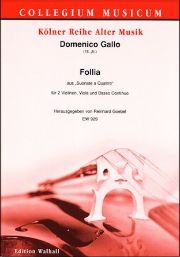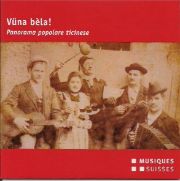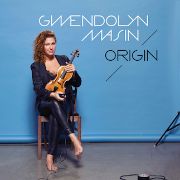Keeping quality high
As every year, the Deutscher Musikverleger-Verband e. V. (DMV) awarded the "Best Edition" music edition prize at the Frankfurt Music Fair. Eight publications were honored.
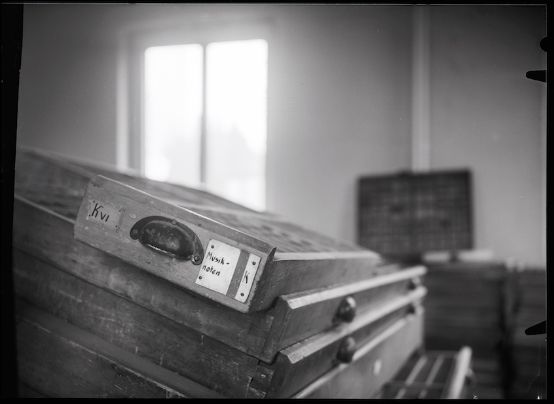
More than 300,000 editions of sheet music from German publishers are available in German music shops, with around 7,000 new publications being added every year. At a time when professional musicians, teachers and the large number of amateur musicians, mainly children and young people, often have to make do with makeshift solutions due to economic constraints, it seems appropriate to award a special prize to sheet music, music books and digital editions of outstanding quality.
The aim is to highlight the achievements of those involved in production, but above all to raise the public's awareness of quality. Winfried Jacobs, Vice President of the DMV, affirms: "The association and its approximately 400 member publishers are thus recognizing special editorial achievements in times of the levelling of cultural achievements and the proliferation of cheap reproductions."
In the 26th year of the renowned competition, 17 publishers took part and submitted their best publications. The winners were
Francois Couperin: Pièces de clavecin, Premier livre, edited by Denis Herlin
Bärenreiter-Verlag, Kassel
Choir book for the Protestant hymnal. With movements for 63 hymns from the Protestant Hymnal, (choirmaster package, performance material) edited by Kay Johannsen and Richard Mailänder
Carus-Verlag, Leinfelden-Echterdingen
Love songs with pictures by Gustav Klimt, (piano book, choir book, CD recordings), edited by Mirjam James
Carus-Verlag, Leinfelden-Echterdinge
Purely women's business. 60 highlights for women's choir from the 16th century to the present day, edited by Jürgen Faßbender, Uwe Henkhaus, Ernie Rhein, Jochen Stankewitz
Edition Peters Group, Leipzig
Lucerne Recognition Award for Christov Rolla
The City of Lucerne is awarding the 2017 Art and Culture Prize, endowed with CHF 25,000, to visual artist Peter Roesch. Recognition prizes worth CHF 10,000 each go to the translator Ute Birgi-Knellessen and the musician Christov Rolla.

Christov Rolla, musician, is a musician of the younger generation with a considerable body of work as a composer, arranger, choirmaster and actor. He has already expressed his diverse musical expressiveness in countless theater productions. According to the city's press release, his work is characterized by "an extraordinary musical breadth that is unparalleled in Central Switzerland".
As a trained school and church musician and choirmaster, he knows his trade. With his musical breadth, he is able to create the right sound for every play. His dramaturgical flair, his great affinity for the written word and his concise and idiosyncratic compositions would elevate every play to a new, higher artistic level, the city adds. Christov Rolla lives in Lucerne.
Wind lessons with "Addizio!"
The teaching aid "Addizio!" by Jörg Sommerfeld offers an enormous wealth of materials and variations. Internal differentiation in particular is supported.
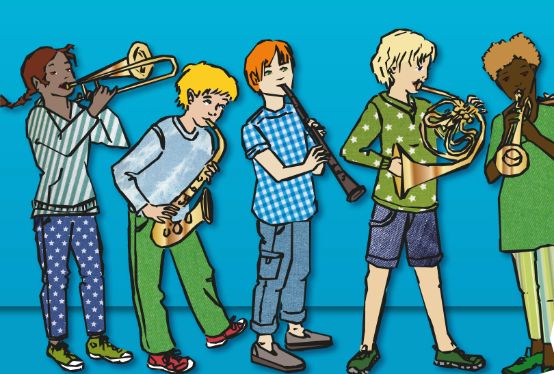
Addizio! is a very comprehensive teaching and instructional work for working with mixed wind ensembles, wind classes or children's wind orchestras. Saxophonist Jörg Sommerfeld has incorporated his many years of experience into this impressive, tried-and-tested work, which consists of a teacher's manual and student booklets for flute, clarinet, alto and tenor saxophone, horn, trumpet, trombone, euphonium and tuba. Additional parts for percussion, keyboard, guitar, violin and piano are available on an enclosed CD-ROM.
The teacher's handbook contains a 60-page introduction and over 100 pages of scores with around 50 pieces of increasing difficulty. The introduction offers a detailed explanation of the teaching concept and possible instrumentations, tips on working with groups and information on the instruments; it also provides an introduction to an internally differentiated and activity-oriented methodology as well as to a competence-oriented (instrumental) pedagogy (as provided for in Curriculum 21, for example). The author places great emphasis on the possibility of internal differentiation. The teaching material starts at the beginning of instrumental playing with four notes and is designed as a progressive course. At the same time, however, additional parts with increased and decreased levels of difficulty are offered for the individual pieces. The teaching material can therefore be used in wind classes, in uniform or mixed wind ensembles from the beginning or in wind ensembles with different levels of players.
The sets include pieces from different genres. There are many children's songs alongside chorales, folk, pop or rock songs, jazz pieces, classical themes, Latin and jazz. In contrast to the teacher's booklet, which is full of explanations, the student booklets are kept very simple. They have an attractive, large sheet music image and contain hardly any text. For newly introduced notes, the fingering is explained directly in the piece. All the pieces are printed as polyphonic scores so that the parts can be distributed ad hoc.
Extensive additional material added Addizio!All pieces can be listened to on Youtube, including the illustrated music text. Fingering charts, additional parts and further scores are available as PDF files on the enclosed CD-ROM. The author also provides the fingering patterns for the woodwind instruments as text fonts for notation programs and the simplified parts of all pieces directly as Sibelius or XML files. It is a pity that the fingerings for clarinet are only available for the German system, both in the booklet and in the text fonts.
Jörg Sommerfeld: Addizio! Teaching wind instruments in classes, groups and ensembles; teacher's manual BV 449, € 49.90; student editions EB 8858-8865, € 14.90 each; Breitkopf & Härtel, Wiesbaden 2016
swing
The double bass is an unwieldy instrument, but it has been smoothly integrated into many musical styles.
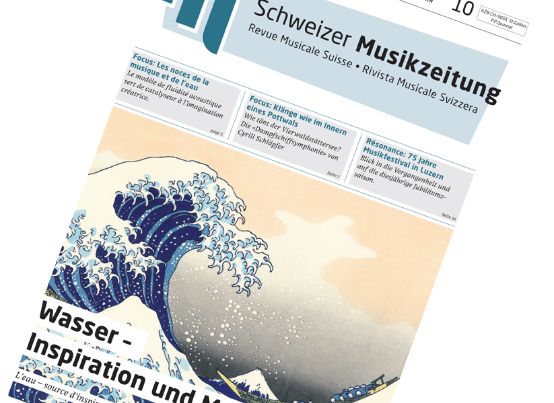

The double bass is an unwieldy instrument, but it has been smoothly integrated into many musical styles.
All articles marked in blue can be read directly on the website by clicking on them. All other content can only be found in the printed edition or in the e-paper.
Focus
On rocking, swaying ground
The bass waltzes and makes the musical structure vibrate
Claire, puissante, sonore... mais sans succès
La colossale octobasse de Jean-Baptiste Vuillaume
Hector Berlioz and the octobass (additional article on the website)
Démontée et remontée en deux minutes
La contrebasse démontable de Denis Favrichon
The grandchildren learn the "grandfather instrument"
The double bass is booming at some music schools
Two truck drivers meet ...
Interview with the double bass player Käthi Steuri
... and also
RESONANCE
" J'aurais voulu chanter la voix de basse " - Entretien avec Jocelyne Rudasigwa
The double bass as a loop or line - Vincent Bertholet's versatile play instinct
Francfort tells us comment va la musique
The musical in the visual - Exhibition "extended compositions" at the Centre d'art Pasquart in Biel/Bienne
Clash! or Mash? - Spring conference and concerts of the INMM Darmstadt
Carte blanche for Christoph Trummer
CAMPUS
Traditions en devenir, modernités plurielles - La HEM de Genève collabore avec l'Initiative Aga Khan pour la Musique
Professeur de musique, quel métier est-ce vraiment ?
Authenticity versus improvisation in the philosophy of about music? - Symposium at the University of Bern
The bamboo bends towards the stars - CAS bamboo flutes
klaxon children's page - page des enfants (PDF)
FINAL
Riddle - Thomas Meyer is looking for
Row 9
Since January 2017, Michael Kube has always sat down for us on the 9th of the month in row 9 - with serious, thoughtful, but also amusing comments on current developments and the everyday music business.
Download the current print edition
Here you can download the current issue. Please enter the search term "e-paper" in the print archive.
The download is free of charge for subscribers.
All other interested parties will receive the PDF of the current issue (or an earlier issue) by e-mail. Costs: Fr. 8.-.
Click here to order the e-paper.
We are also happy to send you the printed version. Costs: Fr. 10.-
Click here to order the printed edition.
Voluntary music lessons in St. Gallen schools
The St. Gallen Cantonal Council obliges primary, secondary and vocational schools to offer voluntary instrumental and vocal lessons. A proposal by the SP/Greens that the music schools offering these lessons must be recognized by the Department of Education was rejected.

The SP and the Greens had requested that any lessons decided upon must take place at a music school recognized by the responsible department. The applicants argued that all music schools in the canton had to demonstrate a minimum set of quality criteria. These included criteria such as the recognized qualifications of the teaching staff, a demand-oriented range of instruments and professional organizational and management structures.
In connection with the implementation of a language concept and extended block times in 2008, a stronger focus was placed on music when drawing up the timetable for pre-primary schools in St. Gallen. To this end, the number of lessons was slightly increased and the previously voluntary primary music school was now included in the timetable on a compulsory basis (with one lesson of 50 minutes each in the second year of kindergarten and the first year of primary school).
In the new St. Gallen elementary school curriculum, which will be applied from the 2017/18 school year, music is also included as a compulsory subject in the lesson plans from elementary school onwards, with the exception of the 3rd year of upper school. Music will be offered as an optional subject in the 3rd year of upper school if there are sufficient applications. In addition, a new teaching aid "MusAik" has been developed for the subject of music in grades 1 to 6 and will be introduced as a compulsory teaching aid.
Suisseculture criticizes national digital strategy
Suisseculture criticizes the Federal Council's paper on digitalization. According to the umbrella organization of cultural professionals, the Federal Council is ignoring the cultural industry and the fundamental issues surrounding the Internet as a legal space.

The digital strategy from last fall did at least mention culture, but did not focus on the role of the artist and the development of their creative content, but rather on the mediation aspect, writes Suisseculture. However, the cultural market also plays a major role in various art forms, especially when it comes to mediation.
In the cultural sector, artists are primarily affected by the distribution opportunities that digitization has brought with it. Not only the music and film industries are affected, but also the book industry, in short: all cultural sectors where the compensation of authors is made up of many small returns from the sale of many copies of their works.
According to Suissculture, the music industry is a prime example of how a technical development can completely uproot a proven business model. With broadband access, file sizes are no longer an obstacle, even for the exchange of films. These industries are faced with the big question of how artistic works should be brought to market in the future: In the meantime, even the newly created legal models are hardly worthwhile.
The paper can be downloaded at:
http://www.suisseculture.ch/fileadmin/_migrated/SC_Kommentar_Digitalbericht_d.pdf
Follia variations in gallant style
Reinhard Goebel has published a part of the "Suonate a Quattro" by the 18th century Italian composer Do-menico Gallo for the first time.
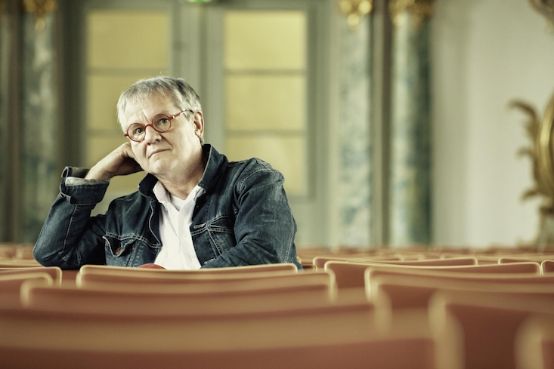
An edition edited and arranged for strings by Reinhard Goebel already has a special value! The violinist, founder of the ensemble Musica Antiqua Köln (since 1973), conductor and lecturer at the Mozarteum Salzburg is regarded as one of the most competent and well-read specialists in historically informed performance practice, but also as a controversial and trenchant musical personality.
With the Follia Variations by the Italian, presumably Neapolitan composer Domenico Gallo (18th century, dates of life are not known), presented here as a first edition, Reinhard Goebel has unearthed a delightful treasure of the "gallant style" from the holdings of the Conservatorio Benedetto Marcello - Fondo Giustiniano in Venice. It is the twelfth work in a collection of Suonate a Quattro. The "Standard" Les Folies d'Espagne dates back to the 16th century and served as a popular model for instrumental variations in Baroque music. The most popular folies or follies are by Lully, Marais, Corelli, Scarlatti and Geminiani, for example, but Bach (Peasant Cantata, No. 8 Aria) and Handel (Sarabande in D minor from the Suite HWV 437) also used this pattern.
Domenico Gallo varies the standard very imaginatively in his string section. According to Reinhard Goebel, this can be played with a chamber orchestra, but also with a quartet plus harpsichord or another continuo instrument. The individual parts are shown to their best advantage; this is not a "concerto for first violin"! However, the work makes some technical demands on all performers. The character of the individual variations is varied. In his preface, Reinhard Goebel also gives useful tips on how to deal with the tempo indications and the traditional ornamentation markings. His string writing gives the articulations a clear character, but is not obtrusively notated. A figure is only provided with bowings and articulations when it first appears. Those who reject this arrangement therefore do not have to overwrite everything. Max Volbers' harpsichord part is also written in four parts, without any "artistic pretensions". If you want to make additions, you can use the numbers given as a guide. The edition contains a double string section for the orchestral performance.
Domenico Gallo: Follia from "Suonate a Quattro" for two violins, viola and basso continuo, first edition by Reinhard Goebel, Collegium Musicum - Kölner Reihe Alter Musik, EW 929, € 19.80, Edition Walhall, Magdeburg 2016
New Ticino folk music
Vüna bèla! Translates roughly as: Play and sing something beautiful! Silvia Delorenzi has made a convincing selection of folk music albums from recent years.
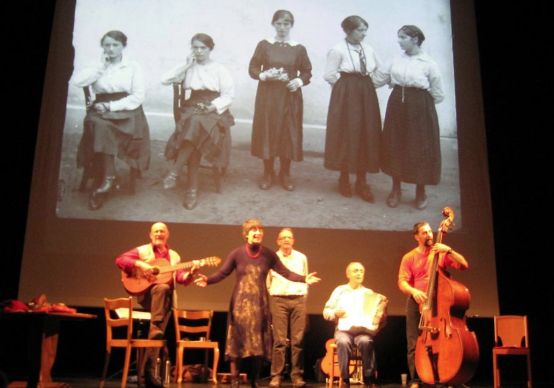
Experimental folk music, as it has been observed in German-speaking Switzerland for over twenty years and documented by Musiques Suisses, Zytglogge and other CD publishers, is not really a topic among Ticino musicians. Nevertheless, there is something new to observe in contemporary folk music in southern Switzerland.
It is a stroke of luck that ethnomusicologist Silvia Delorenzi has spent years inventorying the folk music holdings of the Fonoteca Nazionale in Lugano and has become very familiar with the documented Ticino music. With a trained ear, the Ticino native has discovered original instrumentations and arrangements of traditional songs and dances, which are now available as an album in an excellent selection.
The editor has selected 19 tracks from eleven CDs - seven of them from the last three years - and added a new interpretation of the traditional Mailieds (Il maggio) by the ensembles Vox Blenii, Vent Negru and Duo di Morcote.
In traditional Ticino music, singing comes first. Often the ballads are even sung along by the accompanying instrumentalists in local dialects. Accordion, organetto (small diatonic hand harmonica), guitar, mandolin, violin, double bass and, more recently, saxophone and drums, grouped together in different ways, can still be heard as a typical feature in longer introductions and interludes. The vocal culture includes solo songs such as those of the wonderful amateur singer Luisa Poggi (Vox Blenii), polyphonic songs such as those of the vocal quartet La Cantora with the touching lullaby Oh Ninign and the choirs Cantori di Pregassona and Val Genzona, which together with the Ensemble Giangol onomatopoeically translate the northern foehn into music. The bandella, which is typical of the canton of Ticino and used to be a small ensemble made up of the leaders of a banda (brass band) in every village, has lost its function as dance music and has become rare. The five musicians of the formation Il Bagiöö (The Grapes) revived the tradition in 2008 and recorded a CD in 2015. Thanks to the virtuoso Duo di Morcote, the interplay between guitar and mandolin continues. The wind duo Verbanus uses an old, forgotten instrumentation, bagpipe and shawm. Thanks to Ilario Garbani, the piva is taught in a bagpipe school. The hand harmonica duo Aria Fina with Mauro Garbani as one of the bridge builders between old and new surprises with an arrangement of four montferrinas (montferrina: dance in six-eighths time from northern Italy). The singer-songwriter Marco Zappa is known throughout German-speaking Switzerland and can be heard here with Renata Stavrakakis, Ginger Poggi and friends.
The new release from Musiques suisses is accompanied by an introduction in four languages by Silvia Delorenzi. Unfortunately, the descriptions of the individual ensembles could only appear in Italian in the booklet, but with photos that show the instrumentation. However, it would be desirable to be able to read the texts of the 15 songs as well. The CD Vüna bèla! is a sonorous catalog of today's Ticino music and an informative listening pleasure. The new publication documents what has been forgotten in recent times: namely that the colorful sounds of the Ticino people are also part of Swiss folk music.
Vüna bèla ! Panorama popolare ticinese. Concept and commentary by Silvia Delorenzi. Musiques suisses MGB NV 36
Berlioz and the octobass
Numerous legends still surround the composer's relationship with the colossal bass instrument. Many of them can be dispelled by taking a closer look at the surviving sources.
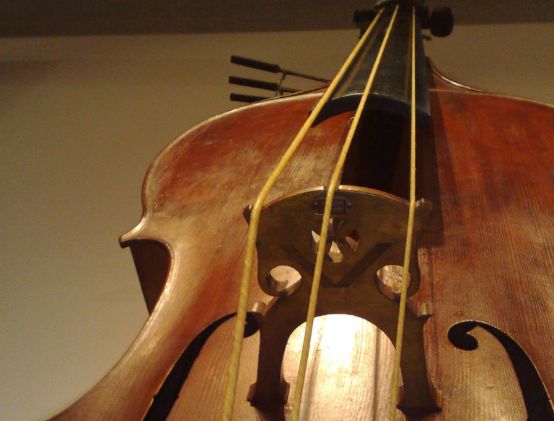

Numerous legends still surround the composer's relationship with the colossal bass instrument. Many of them can be dispelled by taking a closer look at the surviving sources.
In the Journal des débats of November 27, 1851, Hector Berlioz intones a hymn of praise for the octobass: "This instrument, which stands out above all for the beauty of its tones, would be extremely useful for the great orchestras, on condition that composers write it its own part and not simply have it double the double bass part."

- Jean-Baptiste Vuillaume in his studio in 1860
- Photo: Moulin Workshop/ wikimedia commons
Did Berlioz use the same words at the premiere of his Te Deums played the octobass in the church of Saint Eustache on April 30, 1855? Or at the performance of three movements of this work on the occasion of the Universal Exhibition in Paris a few months later? There is a great deal of contradictory information about the composer's relationship to this particular instrument. It is even claimed - without substantiated evidence - that Berlioz commissioned it from the violin maker Jean-Baptiste Vuillaume or that he himself was behind the invention. To this day, however, no trace of the octobass being used in the concertos conducted by Berlioz has been found. Such use is only mentioned in later, unfounded conjectures without a reliable source (sometimes written by renowned musicologists). There is no evidence that this instrument was not used. But such an event would undoubtedly have left tangible traces, if not for the description by a contemporary witness. (The same applies to the fantasies about other composers who are said to have used the octobass, or the confusion with other great double bass types).
In this context, it should be noted that some authors also claim that the Te Deum was premiered on the occasion of the opening of the World Exhibition in Paris (2nd World Exhibition). However, this opening took place on May 15, 1855, two weeks after the concert in the church of Saint Eustache. Could the confusion stem from the fact that the Universal Exhibition was originally scheduled to open its doors two weeks earlier, on May 1? (Further confusion is caused by authors who still wrongly give this earlier date as the opening date; not to mention those who assume an incorrect concert date, such as Henry Barraud, who in his Berlioz biography confuses the dress rehearsal with the first performance). If the performance of the Te Deums had been more closely linked to the World Exhibition, it would have been postponed to coincide with the opening date. In fact, Berlioz benefited from the proximity of this event to present his work to the public, which he had already attempted in vain at the enthronement and marriage of Napoleon III. The contract for the first performance of the work and thus also for the concert on 30 April, co-organized by the composer, states: " ... on the occasion of the Universal Exhibition of 1855, for the benefit of the poor of the parish of Saint Eustache, a Te Deum composed by M. H. Berlioz will be performed ..." The proceeds from the concert were distributed as follows: 30% for the parish poor fund, 20% for needy children in the 3rd arrondissement and 30% for Berlioz.

- Colossal instrument
- Photo: Schoonderwaldt/ flickr
During the revision of his Grand Traité d'instrumentation et d'orchestration modernes In August 1855, the first edition having appeared in 1844, Berlioz included Vuillaume's invention in the chapter on "New Instruments", after the saxophone family, the concertina, an early harmonium and other innovations. Did he take this opportunity to ask the violin maker for a "detailed description of your octobass and some information on the function of the movable keys operated by the left hand"? The short message is only dated "Tuesday, 21st, evening", without month and year. However, as the traité contains a diagram of the tuning of the bass, the request may very well be related to the revision. Moreover, August 21, 1855 was indeed a Tuesday. The message also proves that Berlioz could not have been the inventor of the instrument, in which case he would have known about it. In the Traité, Berlioz mentions the tuning and the range ("only an octave and a fifth" - he does not mention the possibility of using harmonic tones), reminds us that the octobass is tuned only an octave lower than the cello (i.e. a third lower than the 4th string of the double bass), he mentions that the octobass is tuned only an octave lower than the cello (i.e. a third lower than the 4th string of the double bass) and that the cello is tuned a third lower than the cello. He describes Vuillaume's playing mechanism and adds that "the octo-bass (cannot) execute rapid series of notes, and must be given a special voice, different in some respects from the contrabass". Berlioz concludes with the assessment: "This instrument possesses tones of strange power and beauty, full and strong, without roughness. It would be admirably effective in a large orchestra, and all orchestras at music festivals where the number of instruments exceeds 150 should have at least three of them."
Quoted from: Hector Berlioz: Instrumentationslehre: ein vollständiges Lehrbuch zur Erlangung der Kenntniss aller Instrumente und deren Anwendung, nebst einer Anleitung zur Behandlung und Direction des Orchesters; mit 70 Notentafeln und vielen in den Text gedruckten Notenbeispielen, ed. by Alfred Dörffel, G. Heinze-Verlag, Leipzig 1864
Available online at: Bavarian State Library digital, Octobass, Page 230ff.
Lucia Cadotsch is an Echo award winner
Swiss jazz singer Lucia Cadotsch is honored with an Echo Jazz in Germany in the category "Singer/Singer National" for her debut album "Speak Low".
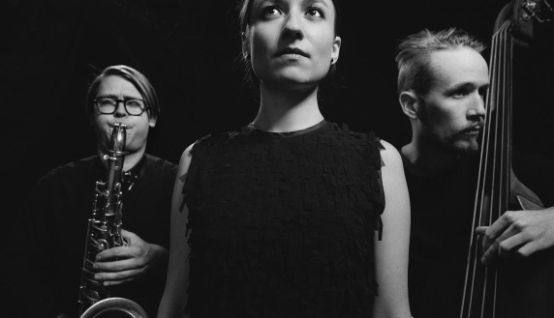
Born in Zurich in 1984, Lucia Cadotsch studied jazz singing at the Berlin University of the Arts and the Rytmisk Music Conservatory in Copenhagen. She has toured with various formations in Germany, Denmark, Switzerland, Colombia and India, among others, and won the main prize at the 1st National Singing Competition New Voices in 2009.
In 2016, she released "Speak Low" (enja records), her first album under her own name. In a trio with Petter Eldh on double bass and Otis Sandsjö on tenor saxophone, she sings a collection of traditional songs such as Strange Fruit, Gloomy Sunday and Moon River. Cadotsch achieved international attention and played on big stages and festivals such as Jazzfest Berlin, Schaffhauser Jazzfestival, Copenhagen Jazzfest, WeJazz Festival Helsinki, Landstheater Linz, Vortex London, Moods Zurich.
From Adam's apple to intercostal muscles
This encyclopedia on all phenomena relating to voice and singing is much more than a reference work.
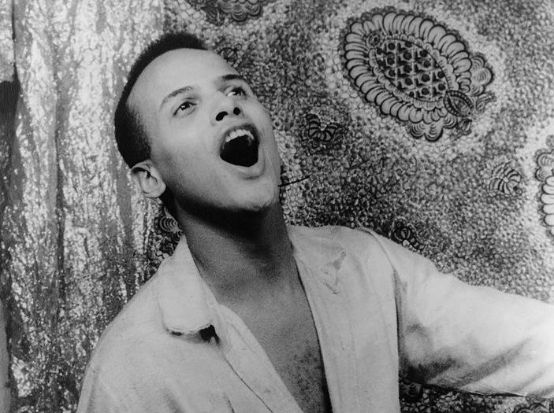
Several editors and around 60 authors are responsible for the articles in this diverse, exciting and wide-ranging reference work, which is preceded by a foreword by none other than Thomas Hampson.
We find a wealth of information about the oldest instrument in the world: whether anatomy and physiology, music medicine and musicology, acoustics, vocal pedagogy and different techniques of voice production, artistic personalities from pop, jazz, opera and concert singing. The reader is presented with a multicolored kaleidoscope of everything connected with the phenomenon of the "voice", from the Adam's apple to the intercostal muscles.
This work is aimed at a wide range of readers: singers and speakers, other musicians, singing teachers, voice therapists, lay people interested in cultural history and vocal phenomena.
We find details about Udo Lindenberg next to biographical information about Jenny Lind, the existential obsession and uncompromising nature of a Maria Callas is juxtaposed with the solidity and reliability of a Joan Sutherland, Tom Waits stands next to Wagnerian singing, dramatic soprano next to double valve function. Vocal schools, facial muscles and ossicles all have their place, while twang, trills and carrying power illuminate different aspects of modern and traditional vocal technique ... If you delve into the biography of the blind Stevie Wonder, you will be amazed at the vivid pictures and details of the vocal tract just a few pages further on.
All of this is supplemented by drawings, paintings, graphics and photographic documents and the enormous wealth of information is interlinked with numerous cross-references and presented in a reader-friendly way on 800 pages. There are links to informative websites, an index of names, authors and articles. If you are looking for something, you will find it quickly, if you are not looking for anything in particular, you will find - a lot!
In my eyes, this encyclopedia is much more than just a reference book. It invites you to browse, read and be amazed. Or did you know that a diseuse is a woman who says something - and takes pleasure in doing so? Or are you familiar with Ingeborg Bachmann's obituary of Maria Callas?
Encyclopedia of the singing voice. Geschichte - Wissenschaftliche Grundlagen - Gesangstechniken - Interpreten, ed. by Ann-Christine Mecke, Martin Pfleiderer, Bernhard Richter, Thomas Seedorf, foreword by Thomas Hampson, 800 p., € 98.00 (subscription price until 30.6.2017; Laaber-Verlag, Laaber 2016,
ISBN 978-3-89007-546-4
Pure joy of playing
With the selection on the CD "Origin", violinist Gwendolyn Masin follows in the footsteps of her Eastern European origins.
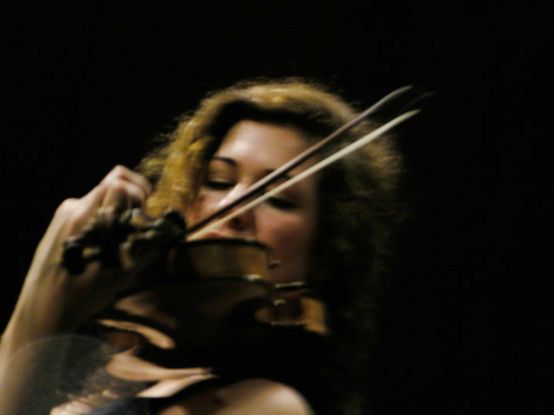
Gwendolyn Masin begins her CD with a furious start Origin. Manuel de Fallas Danse Espagnole from his opera La Vida Breve the violinist, who teaches in Geneva, plays in an extroverted, lively and extremely musical manner. The piece sounds very direct, supported by a wonderfully natural recording, which the sound engineers in Diósd, Hungary, managed to achieve. Masin has her musical roots in the Middle East. Her mother is Hungarian and her father is of Czech-Dutch descent. In the booklet, Masin describes Origin as a very personal compilation. Works by Béla Bartók or the Hungarian Miklós Lukács, who plays in their ensemble, encircle their musical origins. In addition to de Falla, there are other names that are characterized by special musical styles: Pablo de Sarasate, for example, the Spanish composer and violin virtuoso, Maurice Ravel and Fritz Kreisler.
Each work on the CD demands its own approach. Masin shows particular strengths in her dancing. Her stroke is feathery and light; when necessary in the harsh Bartókian diction, it can also be rousingly brutal with sound elements. The fact that the soloist can unfold so musically is also thanks to the ensemble, which blends in delicately without being too much in the background. This CD is fun at every point. Only some of the ritardandi and accelerandi are debatable. These are dangerously close to the kitsch border, especially in Sarasate's Gypsy ways op. 20, but they are easily excusable. After all, sobriety would be inappropriate in the face of such full-blown joy of playing.
Gwendolyn Masin: Origin. Works by Manuel de Falla, Ernest Bloch, Miklós Lukács, Béla Bartók, Maurice Ravel, Pablo de Sarasate, Fritz Kreisler, Gricoraş Dinicu / Jascha Haifetz. Fountainhead Productions 2016, TZ 1169
Gwendolyn Mason plays Manuel de Falla's "Danses espagnoles" on YouTube
Unesco celebrates the International Day of Jazz
April 30 is the International Day of Jazz - proclaimed in November 2011 by the 36th General Conference of Unesco.
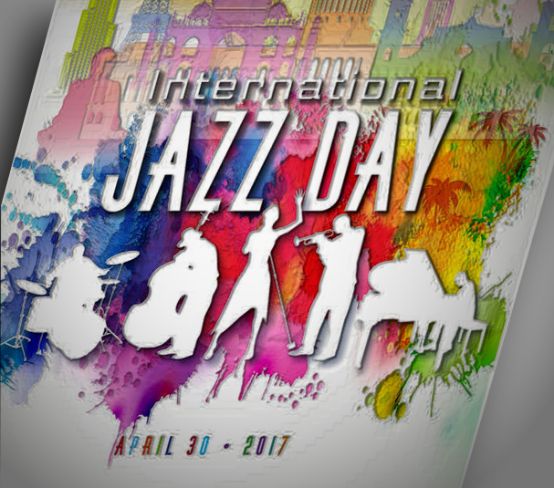
On April 30, the International Day of Jazz will take place for the sixth time. People in over 190 countries around the world will celebrate the universal importance of jazz through thousands of concerts, educational activities and film screenings. The central event will feature an all-star concert in Havana, Cuba.
The all-star concert at the Gran Teatro de La Habana Alicia Alonso in Havana will feature over 35 artists, including Till Brönner from Germany, Ambrose Akinmusire (USA), Carl Allen (USA), Marc Antoine (France), Richard Bona (USA), A Bu (China), Igor Butman (Russia), Bobby Carcassés (Cuba), Regina Carter (USA), Kurt Elling (USA), Kenny Garrett (USA), Herbie Hancock (USA), Antonio Hart (USA), Takuya Kuroda (Japan), Ivan Lins (Brazil), Sixto Llorente (Cuba), Marcus Miller (USA), Youn Sun Nah (South Korea), Julio Padrón (Cuba), Gianluca Petrella (Italy), Gonzalo Rubalcaba (Cuba), Antonio Sánchez (Mexico), Christian Sands (USA), Esperanza Spalding (USA), Chucho Valdés (Cuba), Ben Williams (USA), Tarek Yamani (Lebanon), Dhafer Youssef (Tunisia), Pancho Amat (Cuba) and César López (Cuba). The concert will take place on the UNESCO website broadcast live.
Until 2014, Jazz Day in Switzerland featured a Jazz Day Festival will be held. This year's events include the ZKB Jazz Prize Festival at Moods in Zurich from April 30 and a Roaring Twenties Show in Uster. More national events at jazzday.com
Bärenreiter honors St.Gallen bandmaster
Dominik Beykirch (2nd Kapellmeister at the Deutsches Nationaltheater and Staatskapelle Weimar), Mihhail Gerts (1st Kapellmeister at Theater Hagen) and Hermes Helfricht (1st Kapellmeister at Theater St. Gallen) have been awarded the Urtext Prize by Bärenreiter-Verlag.
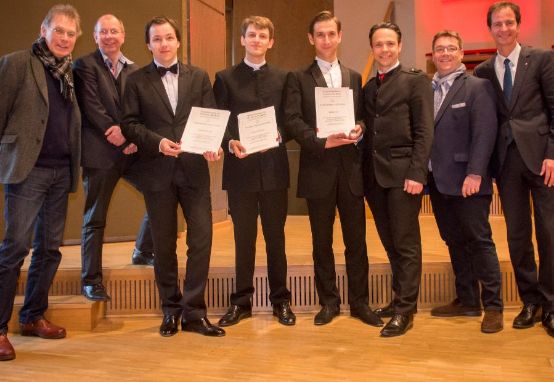
Bärenreiter-Verlag has been cooperating with the Conductors' Forum of the German Music Council for many years to support young conductors. Particularly successful scholarship holders who have been supported in their musical development by the German Music Council over a period of four years receive the Bärenreiter Urtext Prize, which consists of the scores of the nine Beethoven symphonies in the edition by Jonathan Del Mar.
The award ceremony took place as part of the final concert of the Conductors' Forum with the Nuremberg Symphony Orchestra. The final concert offers the young conductors the opportunity to present themselves in a concert at the end of their sponsorship period.
The Conductors' Forum is the German Music Council's nationwide support program for top young conductors, which promotes young talent through master classes and stands for artistic encounters between the young generation of conductors and nationally and internationally renowned conductors.
Jazz compositions on feminism and diversity
Under the artistic direction of Julia Hülsmann, Professor of Composition, 14 students from the Berlin University of the Arts and the Hanns Eisler School of Music Berlin have been working on compositions since May last year. They are now available on CD.
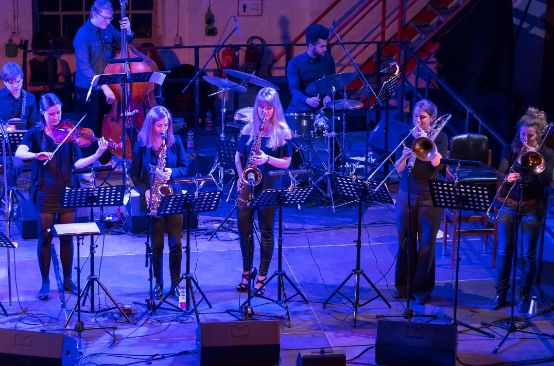
Before beginning their compositional work, the students intensively explored the topics of feminism, diversity and specifically the role of women in jazz. Women are still underrepresented in subjects such as jazz and composition, as the "jazzstudie2016" conducted at the University of Hildesheim clearly shows, writes the UdK (Berlin University of the Arts).
The project name "Planet 9" alludes to new discoveries and the expansion of knowledge systems. Just as our solar system has recently been enriched by a planet, there is still much to discover in the jazz scene: "Planet 9" makes a musical statement that aims to sharpen the ear for diversity and overcome structural hurdles.
The CD "Planet 9" is published in the series "jazz_betont", the label of the UdK Berlin. Website: www.udk-berlin.de/universitaet/betont-das-label-der-udk-berlin/katalog/jazz-betont/







